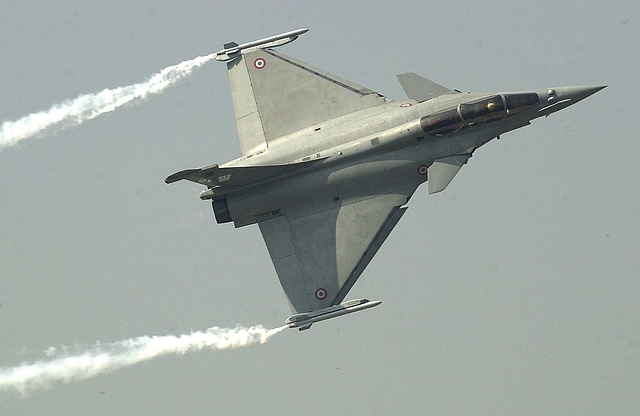
Modi Government Messed Up The Communication Around Rafale Deal, And Now It’s Paying The Price
A good option even now would be to call leaders of major political parties to a closed-door briefing on the details of the Rafale deal, with invitees being sworn to secrecy.
It may not work, but at least it would prove sincere intent on the part of the government.
The least one can say about the Rafale deal is that the National Democratic Alliance (NDA) government has simply messed up the communication around it. Now, even assuming there is no cronyism or hanky-panky in the deal, it will seem as if the government has something to hide.
Already, the Supreme Court is demanding to look at “how” the government decided to buy 36 Rafales, a medium multi-role combat aircraft (MMRCA), in flyaway condition. The United Progressive Alliance (UPA) was negotiating a deal to purchase 18 in flyaway condition, and another 108 for building under licence at Hindustan Aeronautics Limited (HAL). Defence Minister Nirmala Sitaraman said in an interview to The Economic Times that the 36 Rafales to be bought now will be complemented with a decision to build more of them under licence later, for which the government has sought globally competitive proposals , but this is unconvincing in the context of the government’s perceived unwillingness to answer all questions without ifs and buts.
Given that the NDA deal is a government-to-government one, there is no likelihood of there being a Quattrocchi in-between raking in the shekels as in Bofors, but there are questions about how the offset partner (Anil Ambani) was chosen. With former French president Francois Hollande saying Ambani was literally forced on them, and the French media now claiming that internal Dassault documents show that taking on Ambani as offset partner was crucial to winning the deal, one has to reconsider the assumption that everything was above board in the deal. However, it is not clear if the French media thinks Ambani was a condition for the deal, or merely the offset clause.
While the Supreme Court will not obviously question the technical decision or the price of the 36 Rafales, the government will have to submit – in sealed envelopes – the entire decision-making process that ended in the government-to-government deal. This means, at some point it will have to reveal the reasons that led to a change in the Rafale decision made by the UPA and the one it finally sealed with France in 2016.
The problem is not the Supreme Court and its meddlesome tendencies, but the government’s sheer lack of coherence in defending the deal. The answers to questions on the pricing and why HAL was left out of the picture came not from the government directly, but stories and details leaked through various media persons. This is a dead giveaway that the government does not want to give a formal statement – leading one to suspect that there is something in the deal that is politically controversial. What is it?
On the insertion of Anil Ambani into the deal, it is possible to explain it by saying that the government wanted new players to enter defence manufacturing, but this works only if other parties were also considered for the deal and discarded for various reasons. The government needs to answer why Ambani was chosen, and not someone else with better credentials.
Given the statements emanating from Hollande and the French media, the claim that Dassault on its own chose Ambani seems weak. Dassault is an interested partner in the deal and hardly likely to give an opinion different from what the government wants.
On the other hand, this does not mean Dassault will be unhappy with Ambani, for it still would control 51 per cent in the offset company, Dassault Reliance Aerospace Ltd, and will call the shots on technology, production and procurement. Ambani is not going to be the senior partner in the venture. The offset company is unlikely to fail when Dassault is in charge.
There is also an additional angle for the Narendra Modi government to consider being open about: Western governments make no bones about pushing their own businesses in government-to-government or other deals, but our own government seems reluctant to push Indian businessmen formally in trade deals. So, if the entry of Anil Ambani in the Rafale offsets was part of the Modi government’s move to get more players into defence production, it should say so. But this passes muster only if it can explain how it chose Ambani rather than, say, the Tatas or someone else who is already in the defence business. If the others were not interested in the deal, that would make the government’s move to rope in Ambani more credible. Unless, of course, the only thing the government wants to downplay the Ambani name, which conjures up images of cronyism a la UPA.
The conclusion is simple: either the government must come clean, or the opposition – and the Supreme Court – will take it to the cleaners.
There is something that does not smell right, and it is a pity if Rafale somehow makes Rahul Gandhi more believable than Narendra Modi or his Defence Minister.
A good way out would have been to appoint a neutral former judge to probe the full deal, but with the Supreme Court now directly entering the picture, this option is more or less closed.
A good option even now would be to call leaders of major political parties to a closed-door briefing on the details of the Rafale deal, with invitees being sworn to secrecy. It may not work, but at least it would prove sincere intent on the part of the government.